Jan & John Maggs
Antiques and Art
A Springtime Odyssey - Exploring historic English properties
Part 3 - The Yorkshire Dales, York, and the Peak District
~ ~ ~ ~ ~ ~ ~ ~ ~ ~ ~ ~ ~ ~ ~ ~ ~ ~ ~ ~ ~ ~ ~ ~ ~ ~ ~ ~ ~ ~ ~ ~ ~ ~ ~ ~ ~ ~ ~ ~ ~ ~ ~ ~ ~ ~ ~ ~

~ ~ ~ ~ ~ ~ ~ ~ ~ ~ ~ ~ ~ ~ ~ ~ ~ ~ ~ ~ ~ ~ ~ ~ ~ ~ ~ ~ ~ ~ ~ ~ ~ ~ ~ ~ ~ ~ ~ ~ ~ ~ ~ ~ ~ ~ ~ ~
Easter Sunday would be the final day of our National Trust holiday, so, realizing that pubs serving their legendary Sunday lunches would be fully booked by local families, we decided that a roadside picnic would be a wise decision. So, when we returned to Grange after our Saturday in Lancashire, we visited the local Tesco and selected a few English cold cuts and cheeses, which our hosts were happy to store in their refrigerator pending the morning's departure. On Sunday morning we left Corner Beech House and headed east under brilliant blue skies, with the vast farmlands of Yorkshire before us.
~ ~ ~ ~ ~ ~ ~ ~ ~ ~ ~ ~ ~ ~ ~ ~ ~ ~ ~ ~ ~ ~ ~ ~ ~ ~ ~ ~ ~ ~ ~ ~ ~ ~ ~ ~ ~ ~ ~ ~ ~ ~ ~ ~ ~ ~ ~ ~
9. A picnic near Stainforth

We ate our portable charcuterie in this layby near Stainforth, with peaceful pastoral views on every side.
~ ~ ~ ~ ~ ~ ~ ~ ~ ~ ~ ~ ~ ~ ~ ~ ~ ~ ~ ~ ~ ~ ~ ~ ~ ~ ~ ~ ~ ~ ~ ~ ~ ~ ~ ~ ~ ~ ~ ~ ~ ~ ~ ~ ~ ~ ~ ~
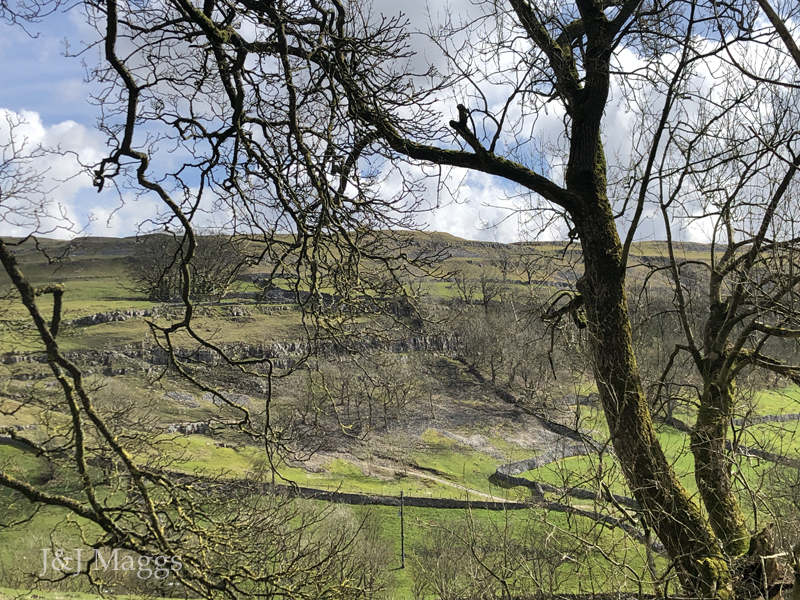
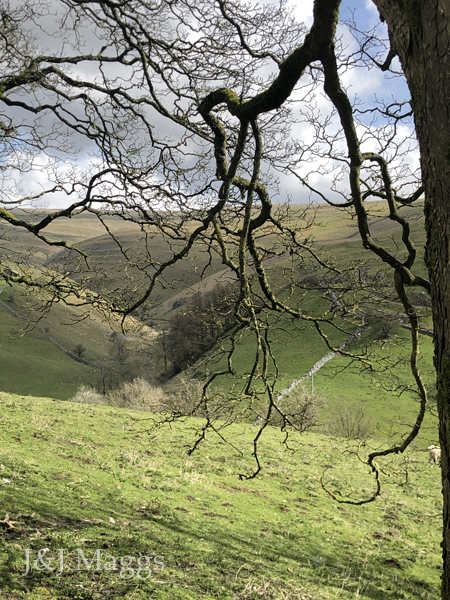
~ ~ ~ ~ ~ ~ ~ ~ ~ ~ ~ ~ ~ ~ ~ ~ ~ ~ ~ ~ ~ ~ ~ ~ ~ ~ ~ ~ ~ ~ ~ ~ ~ ~ ~ ~ ~ ~ ~ ~ ~ ~ ~ ~ ~ ~ ~ ~
10. A drive in the Yorkshire Dales

After lunch we resumed our drive to York. We had chosen to travel on single-track roads, barely the width of our SUV, that wind through farmland for miles, with only occasional narrow pulloffs that allowed vehicles to pass each other. Because of recent heavy rains, many of these were muddy, requiring one of the two vehicles to reverse to a safer pulloff - a sometimes daunting feat, but invariably executed with a courtesy that would be unimaginable at home. Because the drive was challenging, we photographed sparingly, although the views were spectacular in every direction. Here are a few of our favorite shots.
~ ~ ~ ~ ~ ~ ~ ~ ~ ~ ~ ~ ~ ~ ~ ~ ~ ~ ~ ~ ~ ~ ~ ~ ~ ~ ~ ~ ~ ~ ~ ~ ~ ~ ~ ~ ~ ~ ~ ~ ~ ~ ~ ~ ~ ~ ~ ~

Cows, grazing in pastures at the roadside, bounded by stone walls and metal fences
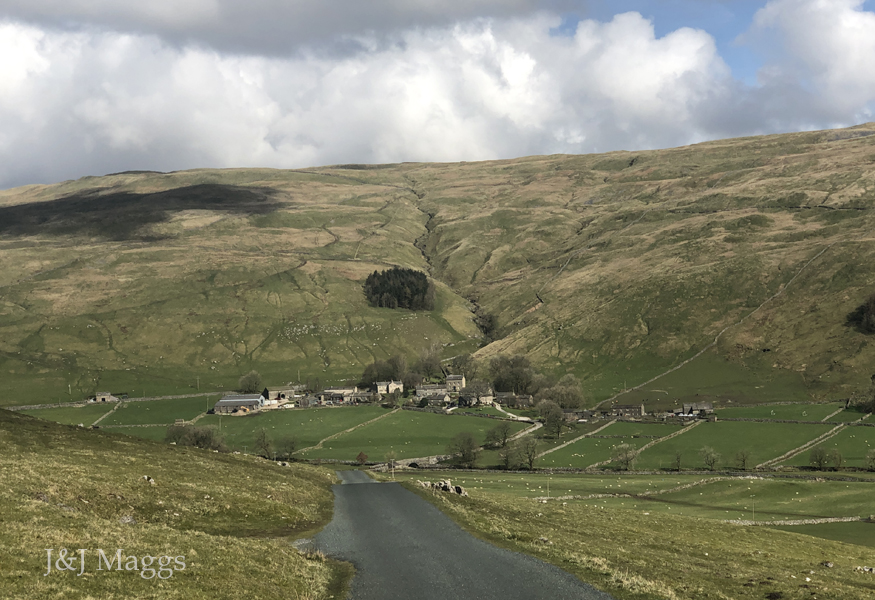
The steep descent into one of many villages that dot the landscape
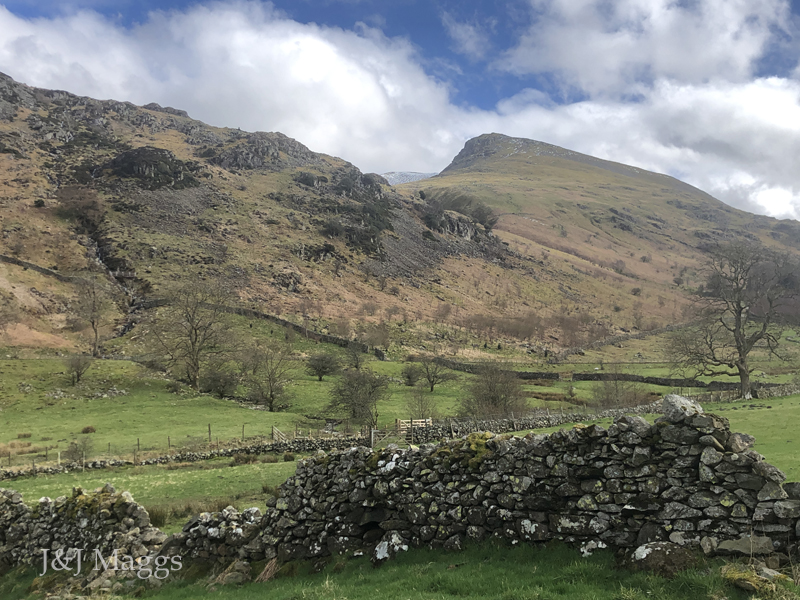
The rugged terrain of much of the Dales
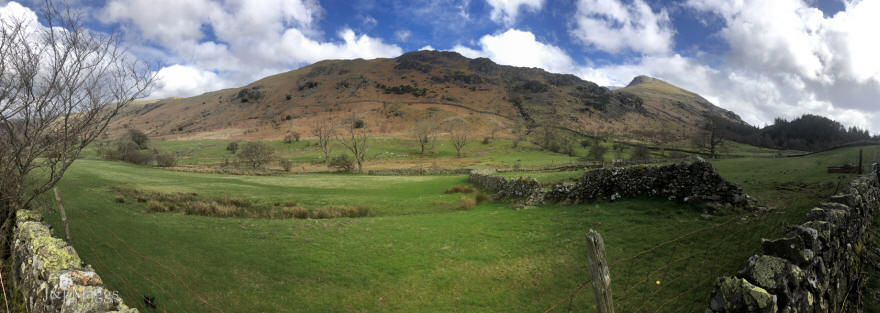
The 2277 foot peak of Pen-y-Ghent

Sheep at the roadside, checking out the foreigners
~ ~ ~ ~ ~ ~ ~ ~ ~ ~ ~ ~ ~ ~ ~ ~ ~ ~ ~ ~ ~ ~ ~ ~ ~ ~ ~ ~ ~ ~ ~ ~ ~ ~ ~ ~ ~ ~ ~ ~ ~ ~ ~ ~ ~ ~ ~ ~
We arrived in York late in the afternoon and spent at least an hour negotiating construction detours that hadn't yet been reported to our GPS.
We had a delicious at an Italian trattoria near our hotel and enjoyed a restful night.
~ ~ ~ ~ ~ ~ ~ ~ ~ ~ ~ ~ ~ ~ ~ ~ ~ ~ ~ ~ ~ ~ ~ ~ ~ ~ ~ ~ ~ ~ ~ ~ ~ ~ ~ ~ ~ ~ ~ ~ ~ ~ ~ ~ ~ ~ ~ ~
11. York Minster
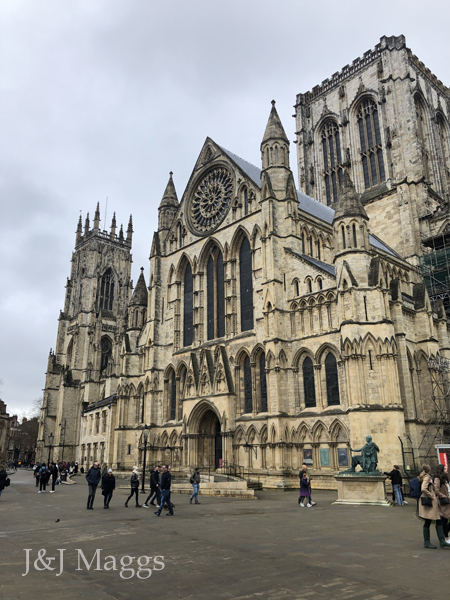
This early English Gothic Cathedral was constructed between 1220 and 1472 and is one of the most important churches in England.
Its exterior is an extraordinarily striking presence in the city, and its interior is no less remarkable.
~ ~ ~ ~ ~ ~ ~ ~ ~ ~ ~ ~ ~ ~ ~ ~ ~ ~ ~ ~ ~ ~ ~ ~ ~ ~ ~ ~ ~ ~ ~ ~ ~ ~ ~ ~ ~ ~ ~ ~ ~ ~ ~ ~ ~ ~ ~ ~
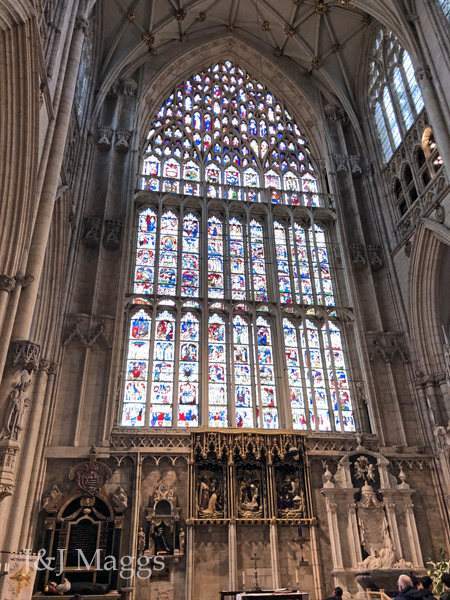
The Great East Window, "the single largest expanse of medieval stained glass in the country", dating from 1405 - 1408 and restored in the first two decades of this century.
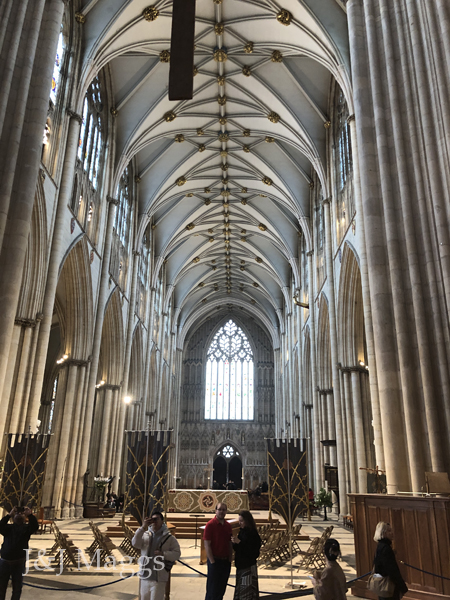
The nave, built between 1291 and 1350, is the
widest Gothic nave in England. Its wooden roof is painted to look like
stone.

The massive organ, perched on top of the choir screen.
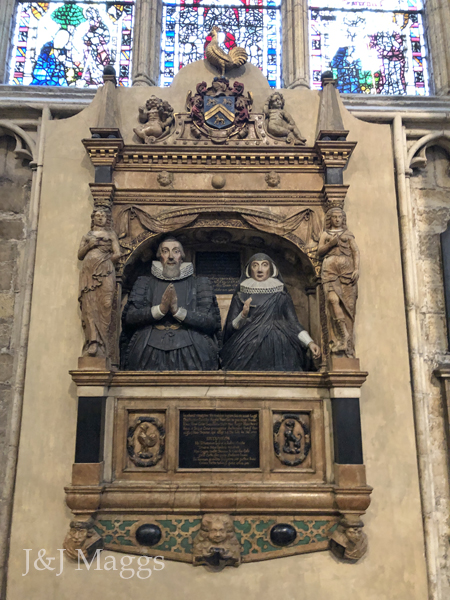
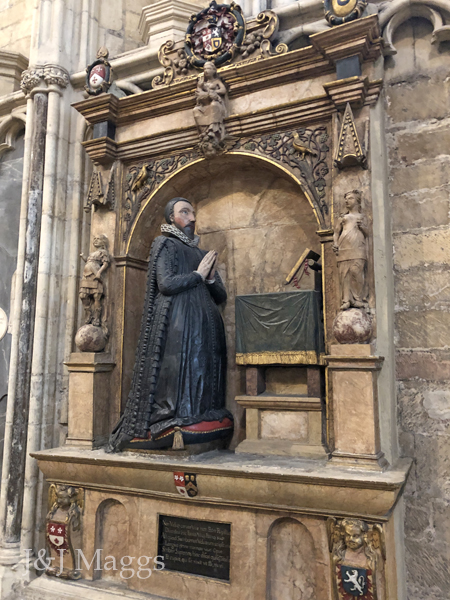
The graves of two 17th-century church officials
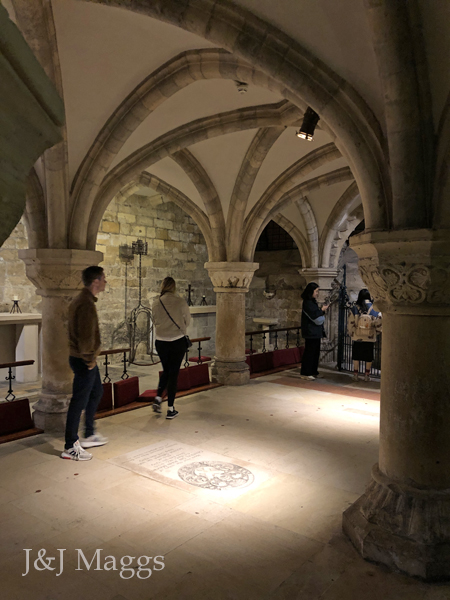
The crypt
~ ~ ~ ~ ~ ~ ~ ~ ~ ~ ~ ~ ~ ~ ~ ~ ~ ~ ~ ~ ~ ~ ~ ~ ~ ~ ~ ~ ~ ~ ~ ~ ~ ~ ~ ~ ~ ~ ~ ~ ~ ~ ~ ~ ~ ~ ~ ~
12. The treasurer's House
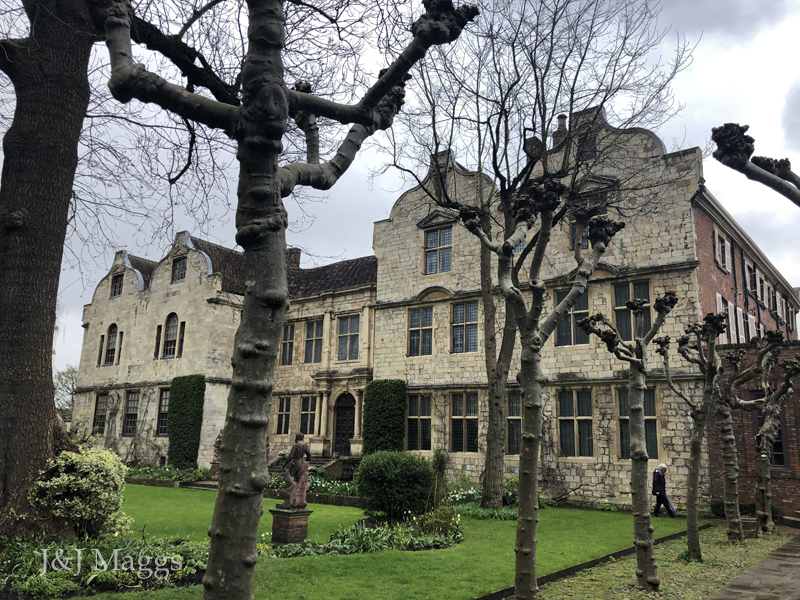
Frank Green purchased this building in 1897 and decorated it to showcase his many collections.
Modifications to the house were designed to impress visitors and consequently, it is more about Green than about the things it holds.
~ ~ ~ ~ ~ ~ ~ ~ ~ ~ ~ ~ ~ ~ ~ ~ ~ ~ ~ ~ ~ ~ ~ ~ ~ ~ ~ ~ ~ ~ ~ ~ ~ ~ ~ ~ ~ ~ ~ ~ ~ ~ ~ ~ ~ ~ ~ ~

Green created this "medieval" hall, although he may have been the only one who felt the house had once contained one. It is grand and ostentateous.
The portrait of Charles I is a copy of the Van Dyke painting in The Louvre.
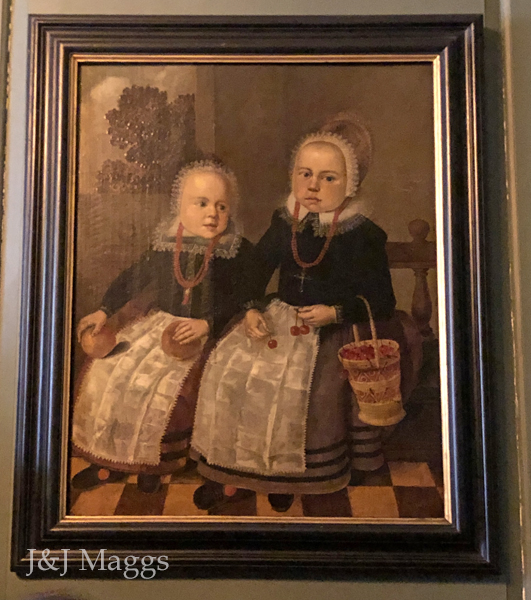
This painting of two Dutch Children in The Court Room was painted in 1629.
The guide who showed us the room supposes that the bodies of the children were painted in the artist's studio and that their faces were added - somewhat awkwardly - by the painter in their home.
~ ~ ~ ~ ~ ~ ~ ~ ~ ~ ~ ~ ~ ~ ~ ~ ~ ~ ~ ~ ~ ~ ~ ~ ~ ~ ~ ~ ~ ~ ~ ~ ~ ~ ~ ~ ~ ~ ~ ~ ~ ~ ~ ~ ~ ~ ~ ~
13. York City Walls

Our hotel was only a few blocks from this section of the wall that once enclosed the city and protected it from invaders.
Before leaving York, we took an early morning walk and photographed this remarkable structure, built mostly in the 13th and 14th centuries.
~ ~ ~ ~ ~ ~ ~ ~ ~ ~ ~ ~ ~ ~ ~ ~ ~ ~ ~ ~ ~ ~ ~ ~ ~ ~ ~ ~ ~ ~ ~ ~ ~ ~ ~ ~ ~ ~ ~ ~ ~ ~ ~ ~ ~ ~ ~ ~
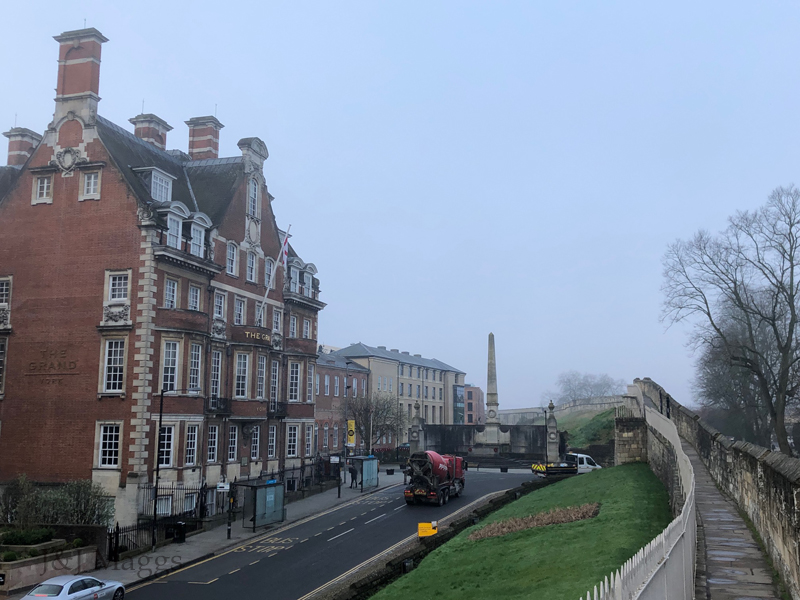
The Grand Hotel, just inside the city wall
~ ~ ~ ~ ~ ~ ~ ~ ~ ~ ~ ~ ~ ~ ~ ~ ~ ~ ~ ~ ~ ~ ~ ~ ~ ~ ~ ~ ~ ~ ~ ~ ~ ~ ~ ~ ~ ~ ~ ~ ~ ~ ~ ~ ~ ~ ~ ~
14. Nunnington Hall

The oldest parts of Nunnington Hall were built by William Parr, brother of Catherine Parr, the last of Henry VIII's six wives, but as it stands today, it is a work of the late 17th and early 18th century.
While there are many period pieces in the house, it feels more like a family home than a museum.
~ ~ ~ ~ ~ ~ ~ ~ ~ ~ ~ ~ ~ ~ ~ ~ ~ ~ ~ ~ ~ ~ ~ ~ ~ ~ ~ ~ ~ ~ ~ ~ ~ ~ ~ ~ ~ ~ ~ ~ ~ ~ ~ ~ ~ ~ ~ ~
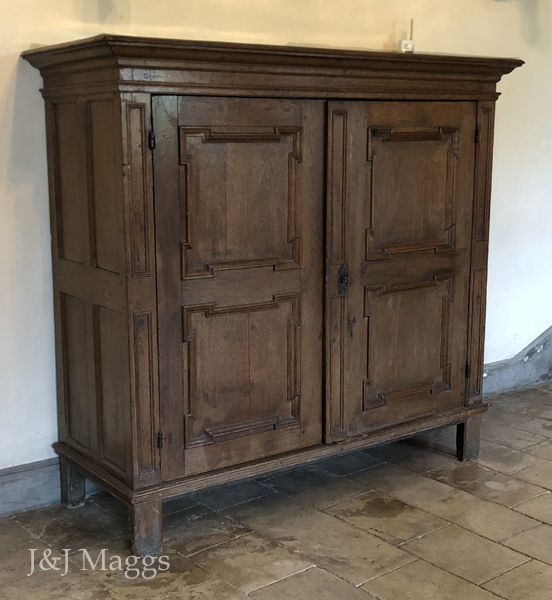
An early "hanging cupboard", ancestor of the more modern wardrobe.
~ ~ ~ ~ ~ ~ ~ ~ ~ ~ ~ ~ ~ ~ ~ ~ ~ ~ ~ ~ ~ ~ ~ ~ ~ ~ ~ ~ ~ ~ ~ ~ ~ ~ ~ ~ ~ ~ ~ ~ ~ ~ ~ ~ ~ ~ ~ ~
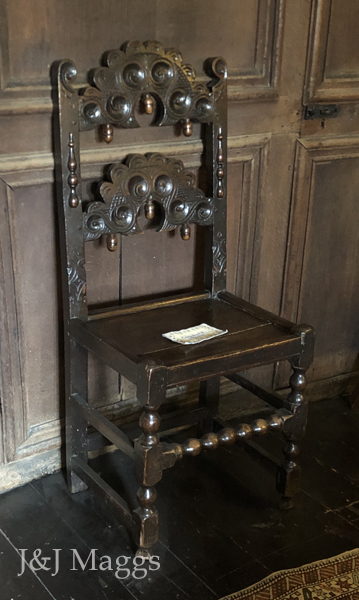
One of a pair of Yorkshire chairs
~ ~ ~ ~ ~ ~ ~ ~ ~ ~ ~ ~ ~ ~ ~ ~ ~ ~ ~ ~ ~ ~ ~ ~ ~ ~ ~ ~ ~ ~ ~ ~ ~ ~ ~ ~ ~ ~ ~ ~ ~ ~ ~ ~ ~ ~ ~ ~

A peacock wishes us "Good Day" as we leave
Nunnington.
~ ~ ~ ~ ~ ~ ~ ~ ~ ~ ~ ~ ~ ~ ~ ~ ~ ~ ~ ~ ~ ~ ~ ~ ~ ~ ~ ~ ~ ~ ~ ~ ~ ~ ~ ~ ~ ~ ~ ~ ~ ~ ~ ~ ~ ~ ~ ~
15. Hardwick Hall

Our last Trust property, and one of the most interesting, was Hardwick Hall, built by Bess of Hardwick, the Dowager Duchess of Shrewsbury.
A famously strong-willed and enormously wealthy widow, Bess built this wonderfully proud house on the top of a Derbyshire hill.
In characteristic fashion, her initials - E.S. - are carved in stone at the top of each of its four towers.
~ ~ ~ ~ ~ ~ ~ ~ ~ ~ ~ ~ ~ ~ ~ ~ ~ ~ ~ ~ ~ ~ ~ ~ ~ ~ ~ ~ ~ ~ ~ ~ ~ ~ ~ ~
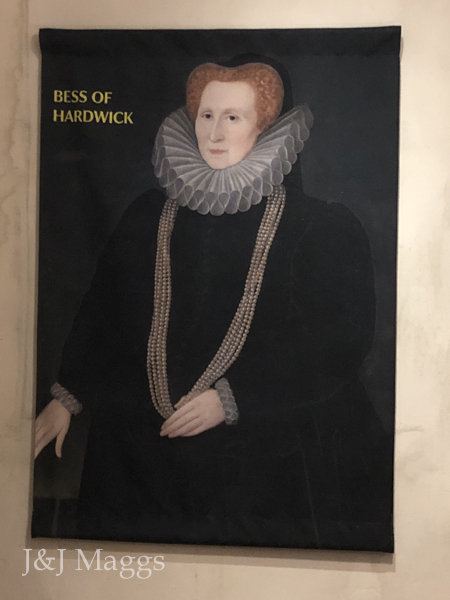
Portrait of Bess, probably by Richard Lockey (c.1565 - 1616), hanging in the long gallery
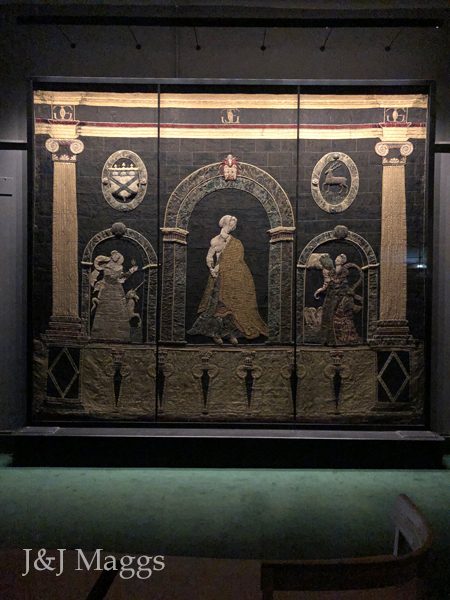
Three of the six panels of "The Virtues Screen"
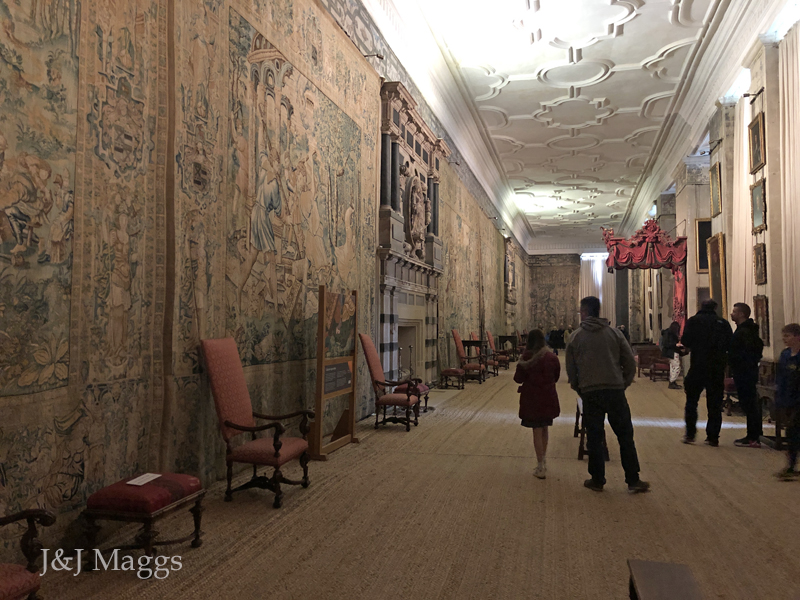
The long gallery, beneath the detailed plaster ceiling, tapestries cover one wall, while the other displays paintings.

Nicholas Hilliard's Portrait of Queen Elizabeth
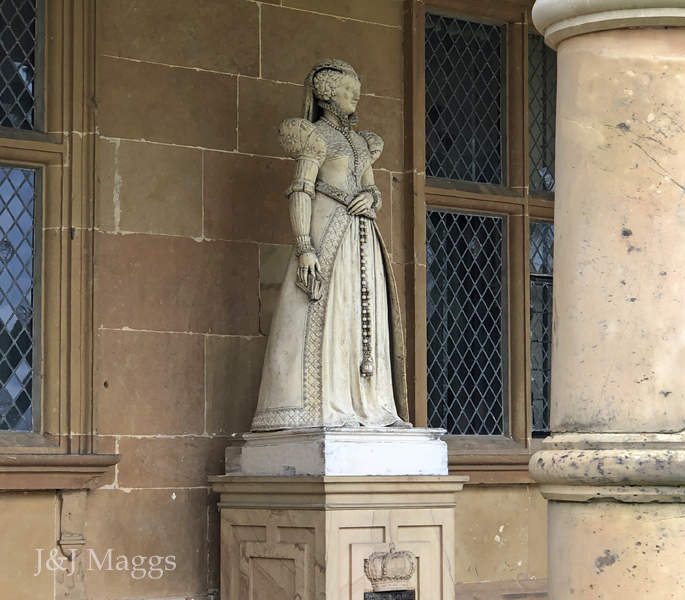
Bess, overlooking part of the grounds of her estate
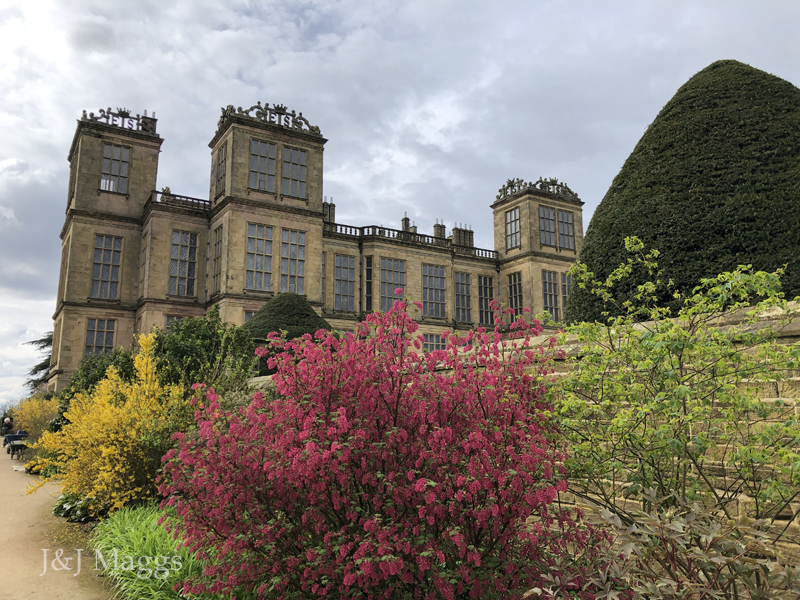
~ ~ ~ ~ ~ ~ ~ ~ ~ ~ ~ ~ ~ ~ ~ ~ ~ ~ ~ ~ ~ ~ ~ ~ ~ ~ ~ ~ ~ ~ ~ ~ ~ ~ ~ ~ ~ ~ ~ ~ ~ ~ ~ ~ ~ ~ ~ ~
From Hardwick we drove to Heathrow, returned our rental car, and rode the Underground into Kensington and our last two days in London. It was a memorable journey and, since our Royal Oak Foundation membership lasts all year, we've made arrangements to continue it in East Anglia and the South when we return to England in September. We hope you've enjoyed traveling with us and will join us in autumn.
If you'd like to return to the Cotswolds with us
and do it again,
CLICK HERE.
~ ~ ~ ~ ~ ~ ~ ~ ~ ~ ~ ~ ~ ~ ~ ~ ~ ~ ~ ~ ~ ~ ~ ~ ~ ~ ~ ~ ~ ~ ~ ~ ~ ~ ~ ~ ~ ~ ~ ~ ~ ~ ~ ~ ~ ~ ~ ~
Click HERE to visit the J&J Maggs Antiques home page.